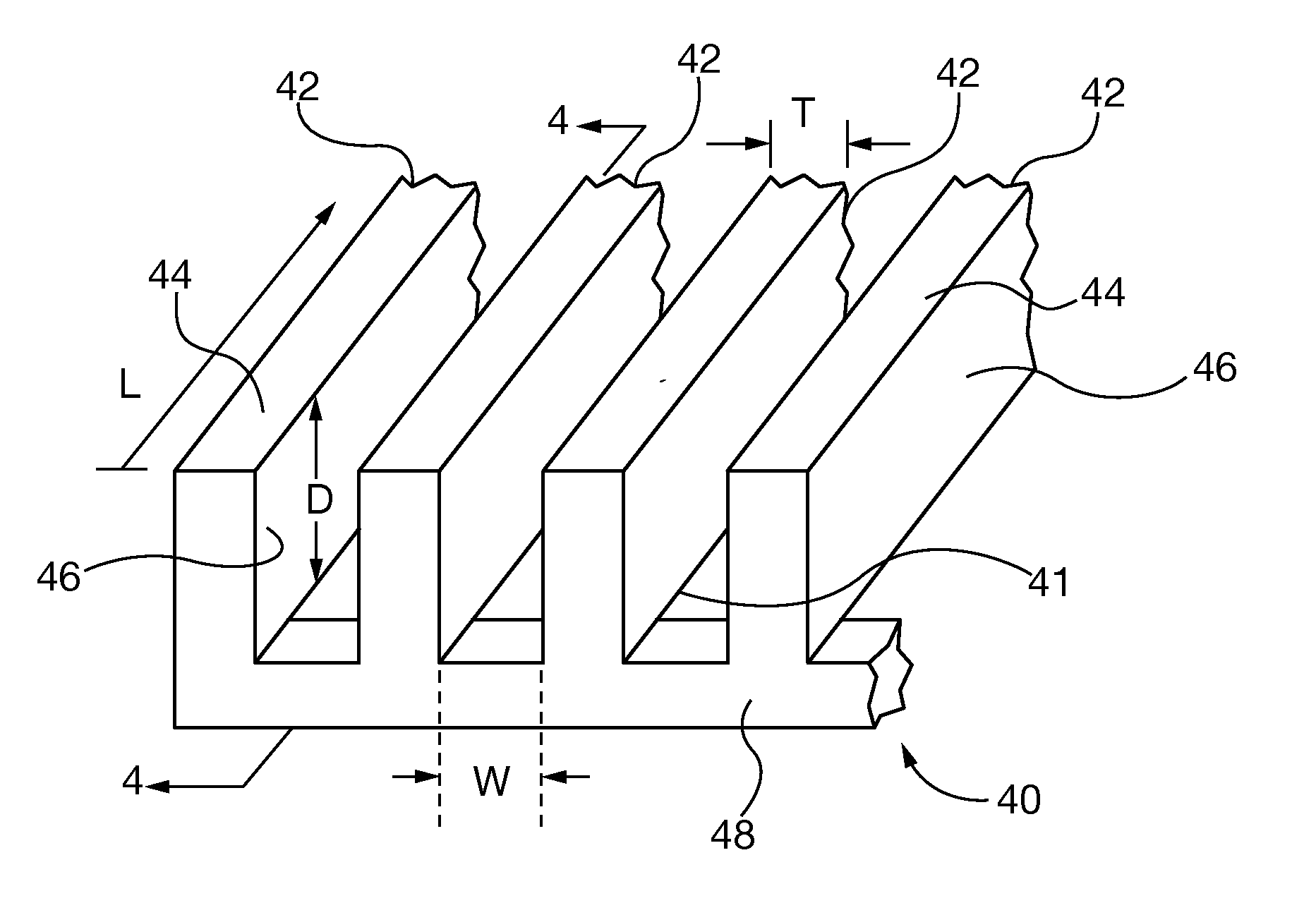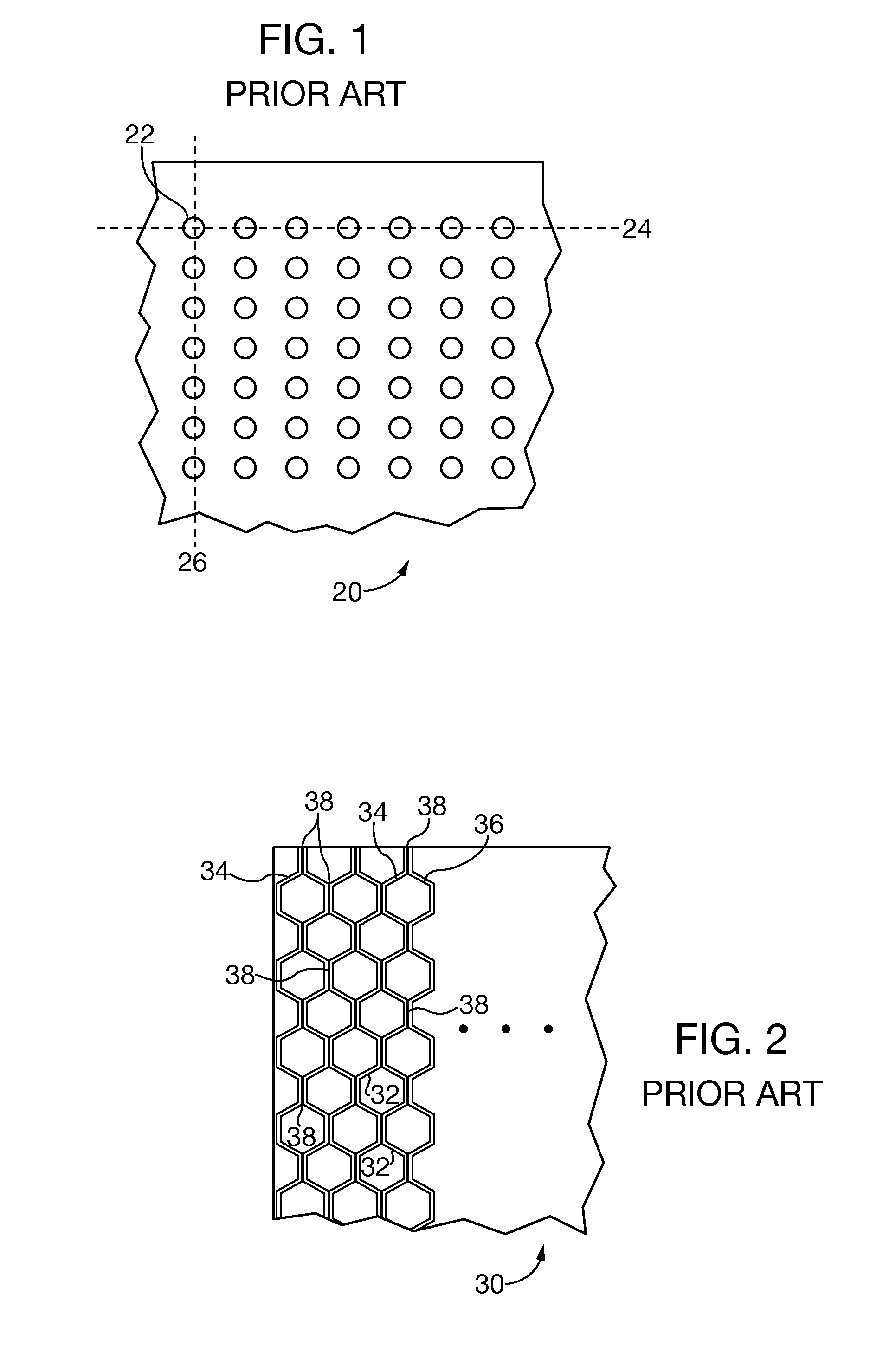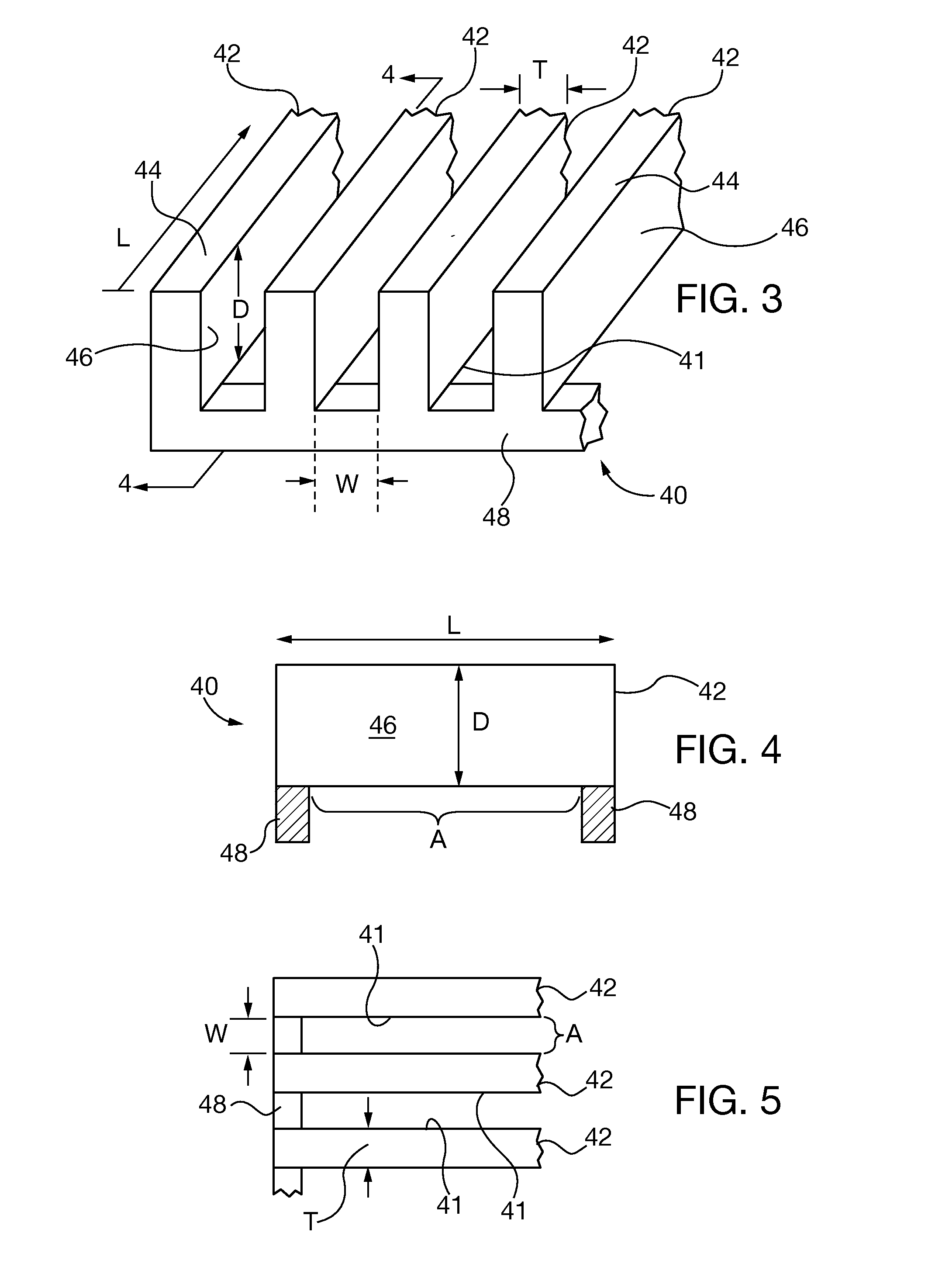Collimator for Medical Imaging and Fabrication Method
a collimator and medical imaging technology, applied in the field of photon collimators, can solve the problems of increasing the difficulty of collimator fabrication, increasing the cost of forming operations, and reducing the efficiency of laser sintering complex grid patterns of the size necessary for medical imaging photon collimators, etc., and achieves cost-effective effects. fewer forming operations
- Summary
- Abstract
- Description
- Claims
- Application Information
AI Technical Summary
Benefits of technology
Problems solved by technology
Method used
Image
Examples
Embodiment Construction
[0037]After considering the following description, those skilled in the art will clearly realize that the teachings of my invention can be readily utilized in the fabrication of photon collimators, comprising a block of photon-attenuating material, including lead or non-lead alloys, such as by way of non-limiting example tungsten or molybdenum alloys, defining a plurality of integrally formed septa slats, each slat having an elongated length dimension greater than its thickness and depth dimensions, and oriented in an opposed pattern array that is laterally spaced relative to its thickness dimension; and an aperture channel defined between each pair of opposed slats. The slats are fabricated by cutting the elongated aperture channels with EDM or laser thermal ablation machining. The slats and supporting structure may also be fabricated by laser sintering non-lead alloy powders, such as powders comprising tungsten or molybdenum alloy powders.
[0038]FIGS. 3-5 show an embodiment of a on...
PUM
| Property | Measurement | Unit |
|---|---|---|
| width | aaaaa | aaaaa |
| length | aaaaa | aaaaa |
| length | aaaaa | aaaaa |
Abstract
Description
Claims
Application Information
 Login to View More
Login to View More - R&D
- Intellectual Property
- Life Sciences
- Materials
- Tech Scout
- Unparalleled Data Quality
- Higher Quality Content
- 60% Fewer Hallucinations
Browse by: Latest US Patents, China's latest patents, Technical Efficacy Thesaurus, Application Domain, Technology Topic, Popular Technical Reports.
© 2025 PatSnap. All rights reserved.Legal|Privacy policy|Modern Slavery Act Transparency Statement|Sitemap|About US| Contact US: help@patsnap.com



